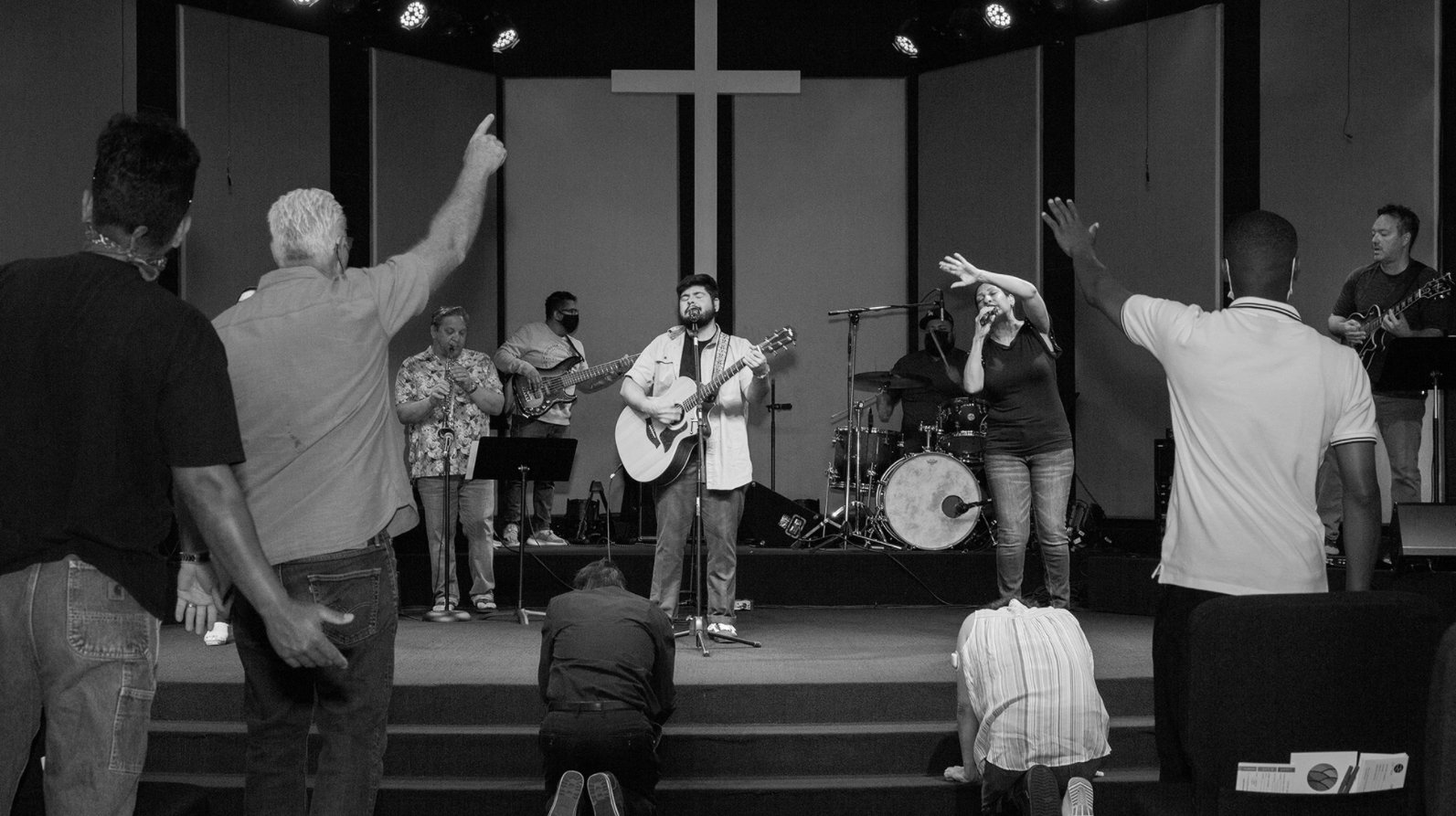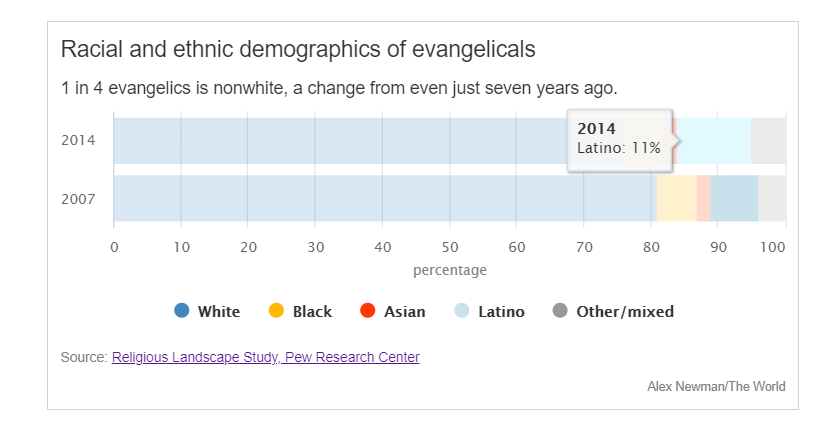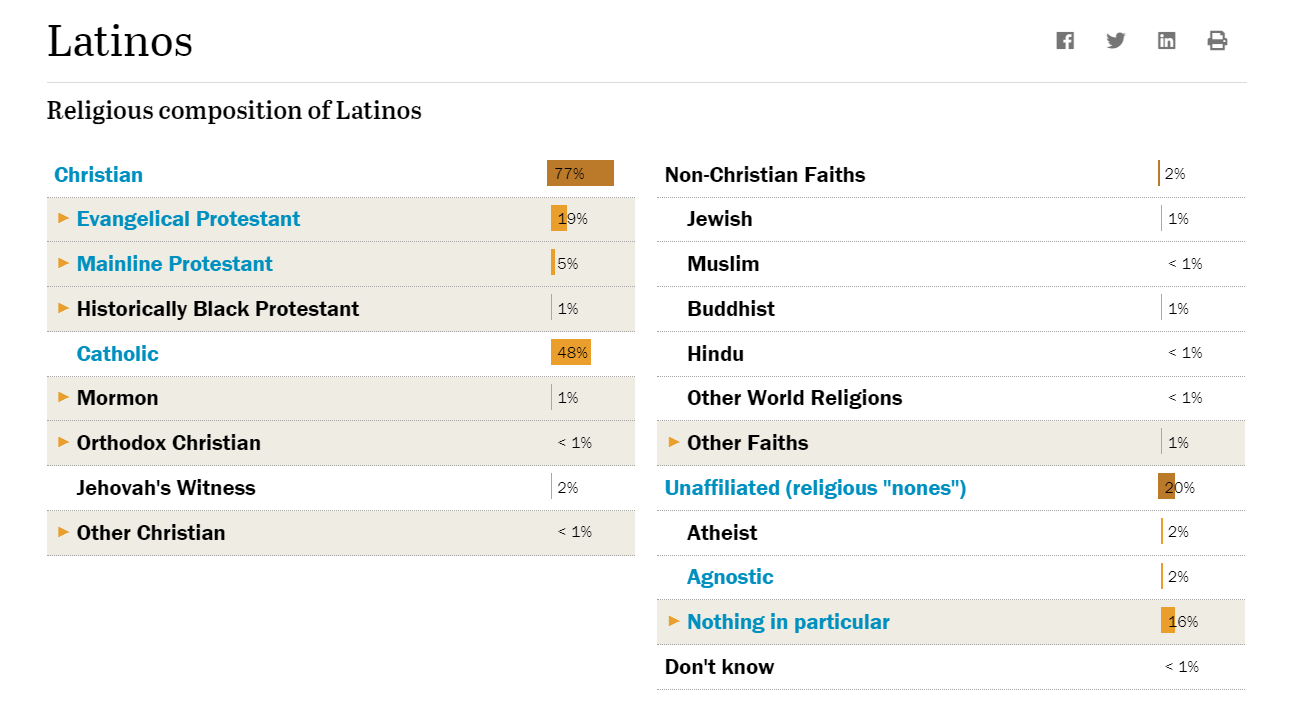General Discussion
Related: Editorials & Other Articles, Issue Forums, Alliance Forums, Region Forumsvital show now (10pm EST) on MSNBC about the rapid shifts to the Rethugs/RW by many Latinos
Field Report with Paola Ramos: South Texas 2022some background:
The Latino population is drifting more and more to the RW as so many are going fundie evangelical that they are now the fastest growing ethnic group for evangelicals, and these converts are far more conservative and likely to vote Rethug.
For the first time ever, less than half of US Hispanics are now Catholic, the first ever for any large Hispanic population on the planet. Let that sink in.
In 2014, 11% of US evangelicals were Latino. 2 or 3 years ago it was up to 19%. Likely easily over 20% now. Thousands of small evangelical seed churches are being systematically set up by Latinos. The whole thing is being driven by the younger cohorts, not a bunch of ageing Boomers who are deciding to go hardcore con in religion and politics.
The Fastest-Growing Group of American Evangelicals
A new generation of Latino Protestants is poised to transform our religious and political landscapes.
https://www.theatlantic.com/culture/archive/2021/07/latinos-will-determine-future-american-evangelicalism/619551/
https://archive.ph/O3tMa

In 2007, when Obe and Jacqueline Arellano were in their mid-20s, they moved from the suburbs of Chicago to Aurora, Illinois, with the dream of starting a church. They chose Aurora, a midsize city with about 200,000 residents, mostly because about 40 percent of its population is Latino. Obe, a first-generation Mexican American pastor, told me, “We sensed God wanted us there.” By 2010, the couple had “planted a church,” the Protestant term for starting a brand-new congregation. This summer, the Arellanos moved to Long Beach, California, to pastor at Light & Life Christian Fellowship, which has planted 20 churches in 20 years. Their story is at once singular and representative of national trends: Across the United States, more Latino pastors are founding churches than ever before, a trend that challenges conventional views of evangelicalism and could have massive implications for the future of American politics.
Latinos are leaving the Catholic Church and converting to evangelical Protestantism in increased numbers, and evangelical organizations are putting more energy and resources toward reaching potential Latino congregants. Latinos are the fastest-growing group of evangelicals in the country, and Latino Protestants, in particular, have higher levels of religiosity—meaning they tend to go to church, pray, and read the Bible more often than both Anglo Protestants and Latino Catholics, according to Mark Mulder, a sociology professor at Calvin University and a co-author of Latino Protestants in America. At the same time, a major demographic shift is under way. Arellano, who supports Light & Life’s Spanish-speaking campus, Luz y Vida, told me, “By 2060, the Hispanic population in the United States is expected to grow from 60 million to over 110 million.” None of this is lost on either Latino or Anglo evangelical leadership: They know they need to recruit and train Latino pastors if they’re going to achieve what Arellano describes as “our vision to see that the kingdom of God will go forward and reach more people and get into every nook and cranny of society.”
The stakes of intensified Latino evangelicalism are manifold, and they depend on what kind of evangelicalism prevails across the country. The term evangelical has become synonymous with a voting bloc of Anglo cultural conservatives, but in general theological terms, evangelicals are Christians who believe in the supremacy of the Bible and that they are compelled to spread its gospel. Some Christians who identify with the theological definition fit the political stereotype, but others don’t. That’s true among evangelical Latino leaders too—they have very different interpretations of how the teachings of Jesus Christ call them to act. Every pastor I spoke with told me that they want to see more Latino pastors in leadership positions, and they each had a different take on what new Latino leadership could mean for the future of evangelicalism. When we spoke over the phone, Samuel Rodriguez, the president of the National Hispanic Christian Leadership Conference and the pastor of New Season Worship, in Sacramento, California, told me, “We’re not extending our hand out, asking, ‘Can you help us plant churches?’ We’re coming to primarily white denominations and going, ‘You all need our help.’ This is a flipping of the script.”
Although Latino congregations are too diverse to characterize in shorthand, one of the few declarative statements that can be made about Latino Protestants is a fact borne out with numbers: They are likelier than Latino Catholics to vote Republican. The expansion of Latino evangelicalism bucks assumptions that Democrats and progressives will soon have a clear advantage as the white church declines and the Hispanic electorate rises. “Some counterintuitive things that have happened [in our national politics] would make more sense if we better understood the faith communities that exist within Latinx Protestantism,” Mulder told me over the phone, alluding to the differing perspectives Latinos hold on many issues, including immigration, and how more Latinos voted for former President Donald Trump in 2020 than in 2016. According to the Public Religion Research Institute, Protestant affiliation correlated more with Hispanic approval of Trump’s job in office than age or gender.
snip
excellent longform article, much more at the top link
There is a link in the article that references the Religious Landscape Study by Pew
in 2014 11% of evangelicals were Latino.

Now, the latest numbers from Pew show it is up to 19% (in less that 7 years)
It is likely over 20% now and growing rapidly, driven by the younger gens,
less than half of Latinos in the US are now Catholic, which is pretty amazing
https://www.pewforum.org/religious-landscape-study/racial-and-ethnic-composition/latino/

also, there is this:
The Newest Texans Are Not Who You Think They Are
The record influx of recent arrivals from all over might be exactly what the state needs. That includes Californians. (And no, they’re not turning Texas blue.)
https://www.texasmonthly.com/news-politics/newest-texans-who-are-they/

snip
Whatever their ethnicities, Californians are coming to Texas in much higher numbers than are migrants from any other state. In 2019 about 42 percent of net domestic immigrants came from California. For all the hyperventilating about Californians ruining certain Texas cities, however, the fastest-growing parts of the state owe much of their growth to Texans shuffling around from city to city. In fact, a primary reason Texas is growing so fast is that we tend to stick around as compared to natives of other states, meaning there’s less out-migration to offset the in-migration. About 82 percent of people born in Texas still live here, making it the so-called stickiest state in the country.
Bill Fulton, director of the Kinder Institute for Urban Research at Rice University, in Houston, points out that “basically all the population growth is in the Texas Triangle,” the relatively tight space defined by the Dallas–Fort Worth, Houston, and Austin–San Antonio regions. He recently wrote a book with former San Antonio mayor Henry Cisneros, “and we found that the Texas Triangle favorably compared to virtually all other mega-regions in the U.S., including Southern California and the Northeast Corridor. It is a true economic powerhouse.”
That’s just one of the ways Texas’s population growth is changing the landscape. In the booming cities, Fulton points out, the influx of a young professional class has led to a flowering of high-rise and mid-rise apartment buildings, as well as multiunit home lots. At the same time, suburbs have become more diverse than they were in the days of white flight from urban neighborhoods, in the sixties, in part because today gentrifying city neighborhoods are edging out non-white residents. Rural and small-town Texas, meanwhile, is shrinking. In fact, 142 of the state’s 254 counties are declining in population, some of them precipitously. Schleicher County, between San Angelo and Sonora, lost 29 percent of its population in ten years, the steepest drop in the state.
The diversification of the suburbs could fundamentally alter the political map by changing reliable Republican standbys to perennial toss-ups. Dying small towns carry less electoral weight. Gerrymandering of districts, now pursued as avidly by Republicans as it once was by Democrats, will continue to redraw electoral maps to maintain the current political order. But at some point, likely soon, the old assumptions will simply no longer hold true, and the keys to winning Texas will change.



The Democrats' Hispanic Voter Problem: It's Not As Bad As You Think--It's Worse
https://theliberalpatriot.substack.com/p/the-democrats-hispanic-voter-problem-dfc
By Ruy Teixeira (Center for American Progress, Brookings Institution, etc)
The Democrats are steadily losing ground with Hispanic voters. The seriousness of this problem tends to be underestimated in Democratic circles for a couple of reasons: (1) they don’t realize how big the shift is; and (2) they don’t realize how thoroughly it undermines the most influential Democratic theory of the case for building their coalition. On the latter, consider that most Democrats like to believe that, since a relatively conservative white population is in sharp decline while a presumably liberal nonwhite population keeps growing, the course of social and demographic change should deliver an ever-growing Democratic coalition. It is simply a matter of getting this burgeoning nonwhite population to the polls.
But consider further that, as the Census documents, the biggest single driver of the increased nonwhite population is the growth of the Hispanic population. They are by far the largest group within the Census-designated nonwhite population (19 percent vs. 12 percent for blacks). While their representation among voters considerably lags their representation in the overall population, it is fair to say that voting trends among this group will decisively shape voting trends among nonwhites in the future since their share of voters will continue to increase while black voter share is expected to remain roughly constant.
It therefore follows that, if Hispanic voting trends continue to move steadily against the Democrats, the pro-Democratic effect of nonwhite population growth will be blunted, if not cancelled out entirely, and that very influential Democratic theory of the case falls apart. That could—or should—provoke quite a sea change in Democratic thinking. Turning to the nature and size of recent Hispanic shifts against the Democrats—it’s not as bad as you think, it’s worse. Here are ten points drawn from available data about the views and voting behavior of this population. Read ‘em and weep.
1. In the most recent Wall Street Journal poll, Hispanic voters were split evenly between Democrats and Republicans in the 2022 generic Congressional ballot. And in a 2024 hypothetical rematch between Trump and Biden, these voters favored Biden by only a single point. This is among a voter group that favored Biden over Trump in 2020 by 26 points according to Catalist (two party vote).
snip
much, much more at the link, a tonne of data, this is not just one poll
riversedge
(70,358 posts)Elessar Zappa
(14,087 posts)don’t think the problem is insurmountable. Dems haven’t been getting their message out on Spanish tv and radio. Republicans dominate those airwaves and it’s killing us. I don’t necessarily think that just because they’re more evangelical that that means their vote is lost to us. After all, most black evangelicals are solid Democrats. But we do need to do something or it’ll be hard for us to win a national election.
PortTack
(32,809 posts)Maybe if you break it into ethnicity it’s different
Abolishinist
(1,318 posts)Watched the first 10 minutes but fortunately, I have to leave for a play.
Totally disgusting, and I'll leave it at that.
brush
(53,925 posts)to remind them there are still many Mexican kid orphans who were never reunited with their parents after trump's border policies separated them from their parents.
Republicans will use them for their votes, and then what? More anti-POC legislation? They have to learn the hard way I guess that republicans can't be trusted.
Thank God Black, Asian, Native American and LGBTQ+ Americans don't fall for their crap.
David__77
(23,559 posts)…
keithbvadu2
(36,964 posts)How long until a schism develops between the white supremacy evangelicals and the 'newcomers'?
(Welcome to our evangelical circle.)
The politics will surely take precedence over the religion.
Again.
Blaukraut
(5,695 posts)And that's not an option.
Ferrets are Cool
(21,110 posts)Celerity
(43,603 posts)Hotler
(11,462 posts)in all nationalities and skin colors.
Fiendish Thingy
(15,686 posts)I guess we’ll find out in November.


